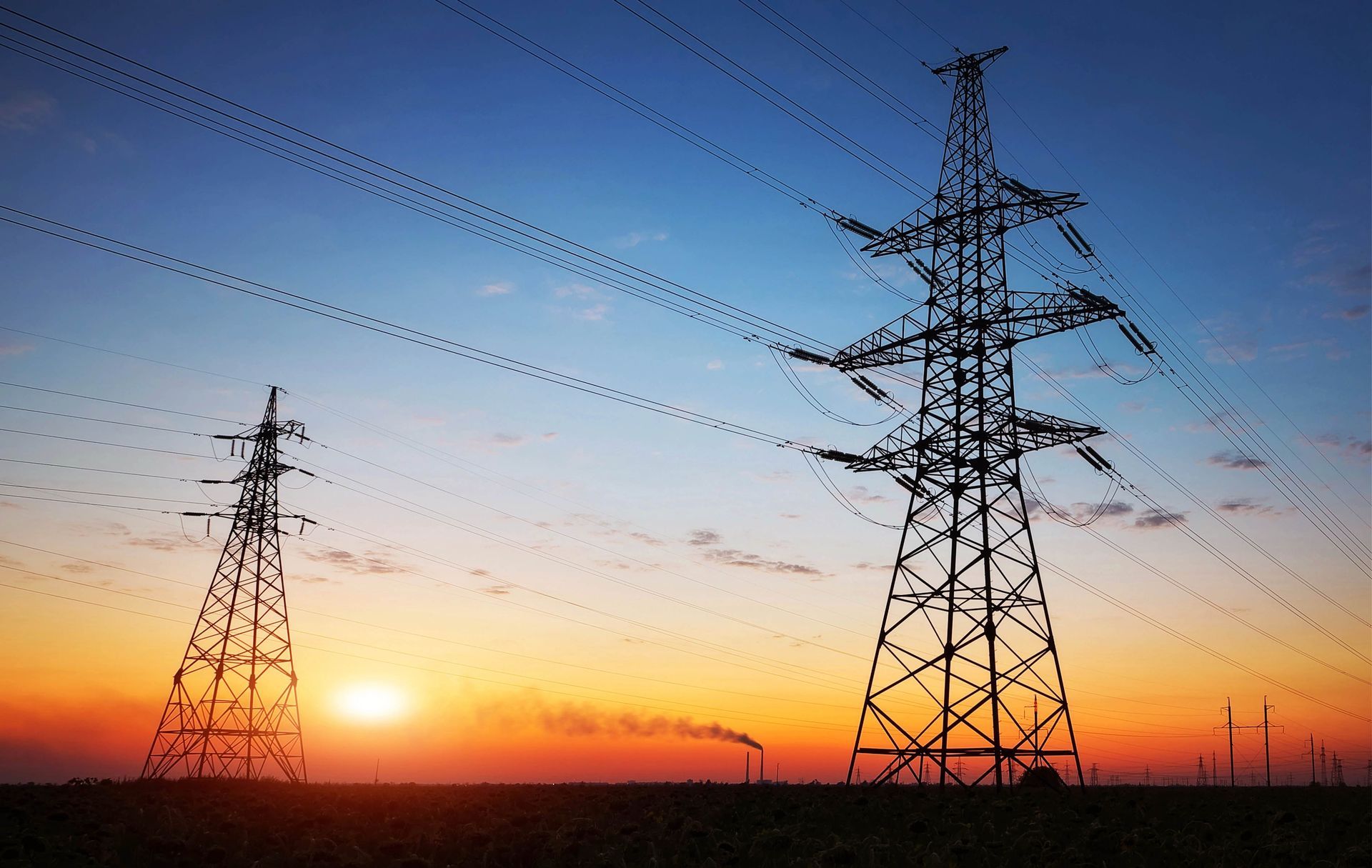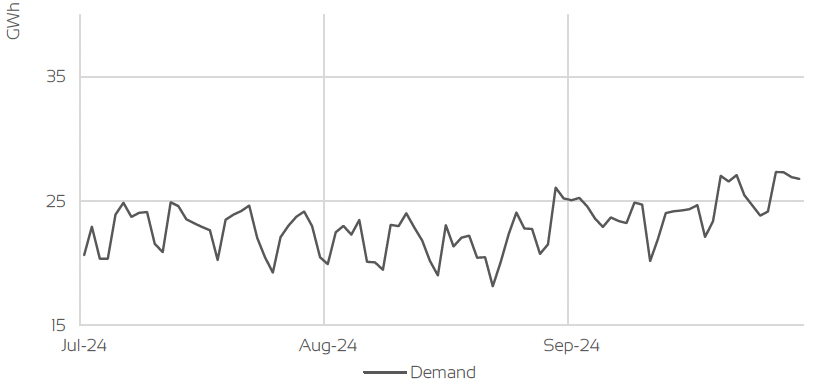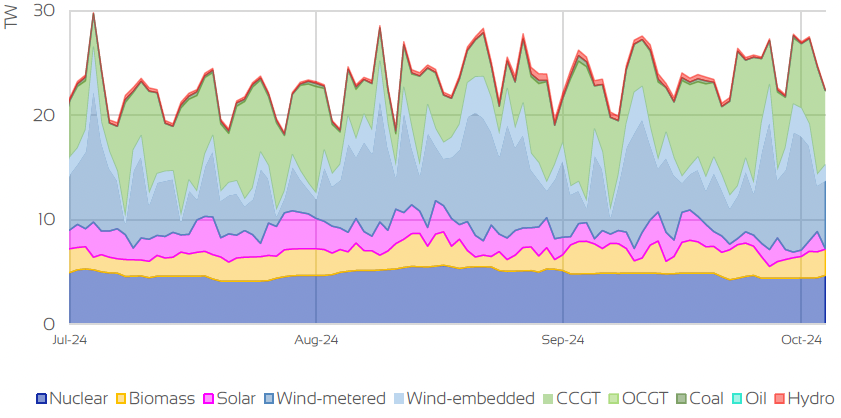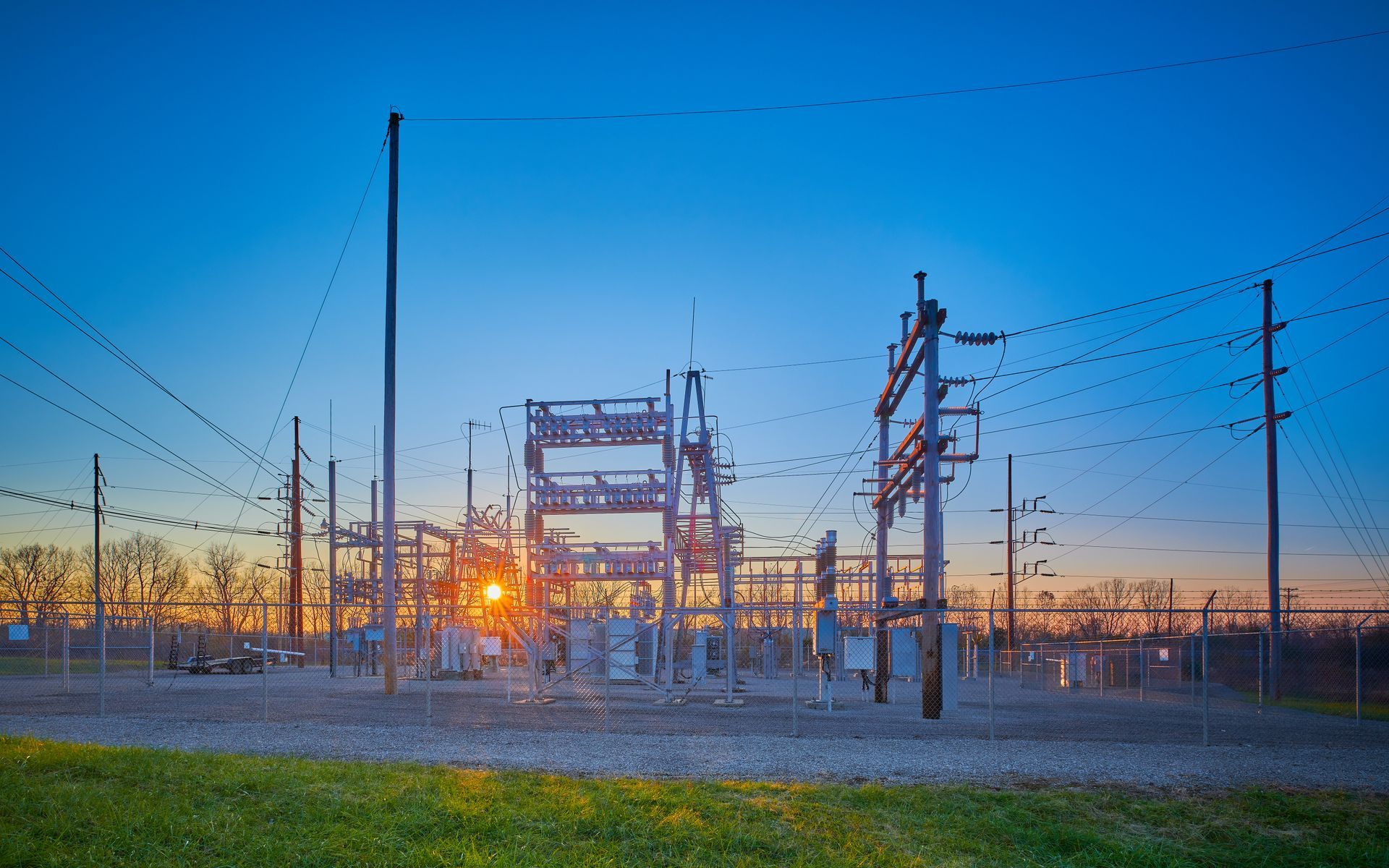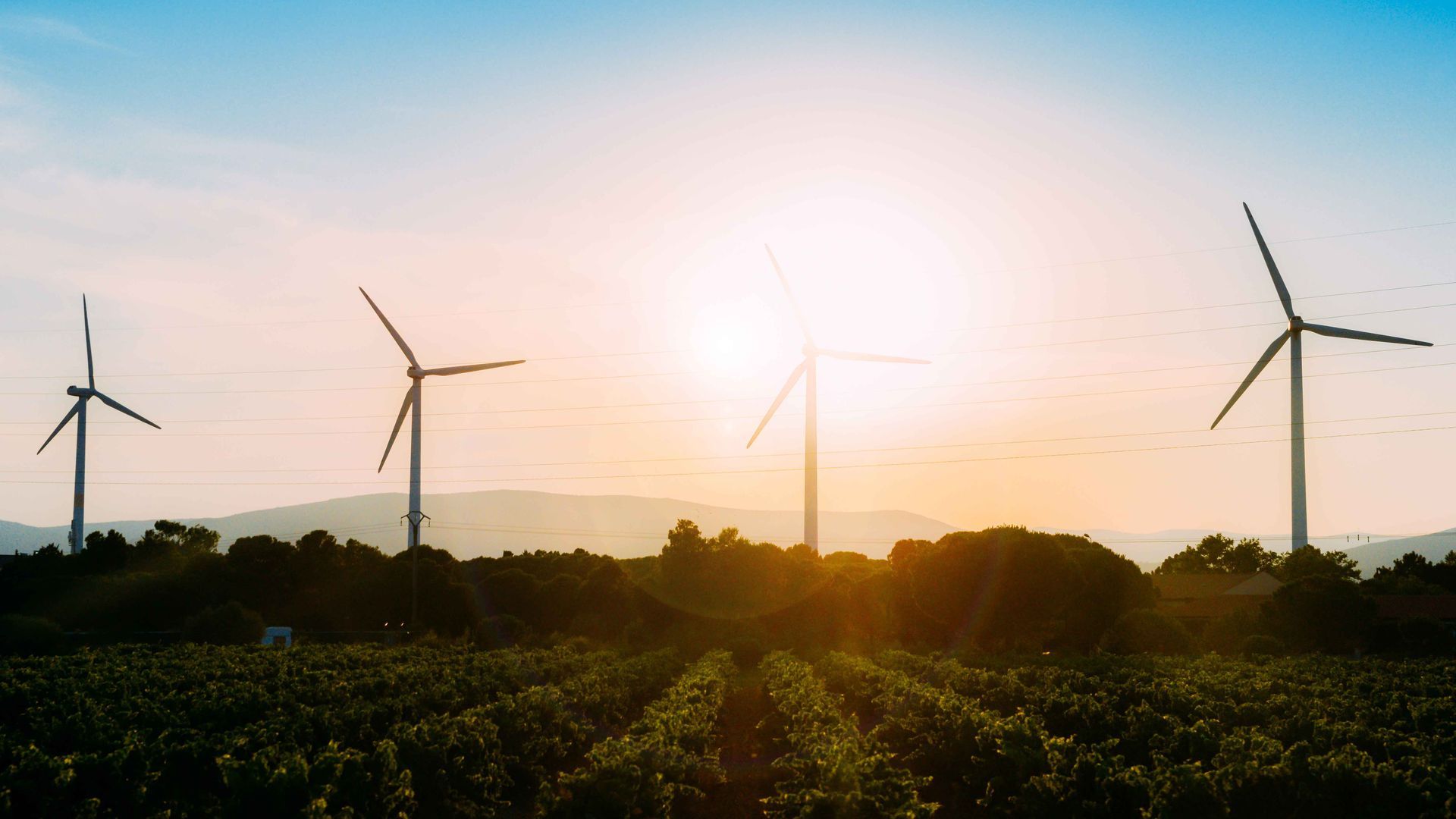Energy Market Insight | September 2024
Energy Market Trends: SEPTEMBER 2024
Volatility Driven by Supply Disruptions, Weather Shifts, and Geopolitical Tensions
WHAT ARE THE SHORT-TERM ENERGY PRICE IMPACTS?
Short-Term ENERGY MARKET TRENDS & INDICATORS
Day Ahead GAS & POWER Prices
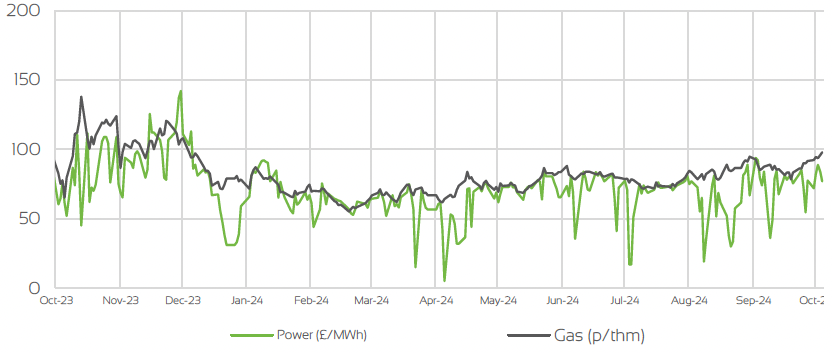
UK Temperature CHANGE
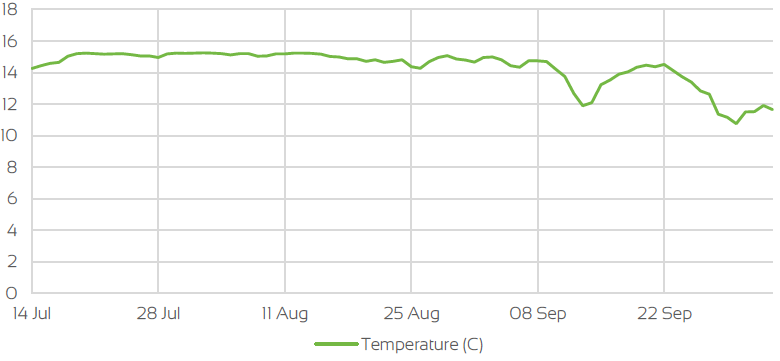
Market Insight: Short-Term
September saw volatility in the UK energy markets, driven by Norwegian gas supply disruptions due to maintenance, cooler-than-expected weather, and rising geopolitical tensions. Early in the month, gas prices spiked as key Norwegian facilities underwent maintenance works, though supplies gradually recovered as the month progressed. Cooler weather conditions increased gas demand for heating, while strong wind generation helped offset some of this pressure.
Geopolitical risks, particularly in the Middle East, heightened fears of supply disruptions, keeping market sentiment cautious. Oil prices were supported by these tensions and U.S. monetary policy, despite OPEC+ production increases offering some bearish relief.
The overall storage level was at 90% despite the ongoing outages and was primarily due to weak demand for gas and favourable weather conditions. Apart from some outages at Norwegian gas terminals, markets also saw a power disruption at the end of the month at UK eleclink interconnector between UK and France, which took 4gw of power supply out of the UK electricity mix, leading to increase in demand for gas for power generation.
However, the occurrence of such event is rare and has a very nominal and short-term impact on prices.
WHAT ARE THE LONG-TERM ENERGY PRICE IMPACTS ?
LONG-Term ENERGY MARKET TRENDS & INDICATORS
Front Seasonal gas & power Prices
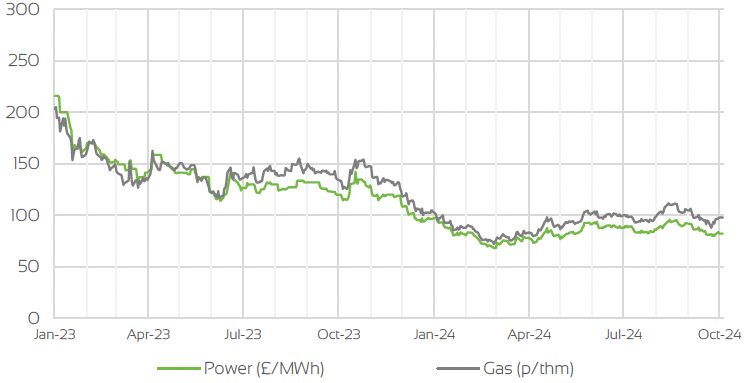
Brent Crude & Carbon Price

UK, EU & US Currencies

Coal Prices

Market Insight: Long-Term
As we enter the winter months, both weather conditions and gas nominations from Norwegian terminals will play a crucial role in maintaining price stability. September experienced an increase in planned maintenance at these terminals, contributing to several outages. This is typical for September each year, as Gassco, the operator of the terminals, prepares the infrastructure for winter. Some planned maintenance will continue until mid-October, after which no further maintenance is scheduled until March 2025. This suggests that gas flows should remain stable, barring any unexpected outages. Weather forecasts point to seasonally average conditions, with demand expected to rise and likely to add a risk premium to the Q1-25 UK NBP gas contracts.
This is compounded by growing uncertainty in the Middle East, which could disrupt U.S. LNG routes to Asia and block Qatar’s access to the EU via the Suez Canal. A recent attack on a British crude oil tanker in the Red Sea on 4th October by Houthi rebels underscores the risk of a supply blockade. While market fundamentals—such as high storage levels and stable flows from Norway—indicate a bearish trend, geopolitical tensions in the coming months will likely be the key price driver. The conflict has the potential to escalate regionally, especially following Iran's recent attacks on military bases in Israel.
Market Outlook
Despite ongoing geopolitical risks in Ukraine and Israel, the overall market outlook remains relatively stable. Gas storage targets have already been met, with current levels at 92%, despite several outages in September. The supply outlook for Winter 2024 looks strong, with stable gas flows from Norway and ample LNG cargoes from U.S. ports. Additionally, the region’s ongoing energy transition from fossil fuels to renewables is highlighted by the closure of the last coal-powered plant at Ratcliffe-on- Soar in September. As we move into the winter months, the key factors to monitor will be weather patterns and gas flows from Norway.
Price volatility is expected to rise as tensions in the Middle East persist, leading to daily fluctuations. While the long-term outlook remains bearish, driven by robust supply fundamentals, geopolitical uncertainty will be a significant factor in short-term price movements. Looking ahead to the summer months, there is likely to be downward pressure on prices as gas demand typically falls due to higher temperatures. However, potential heatwaves in Central Europe and Asia could create upward pressure on prices during that period.
Related News
EXPLORE OUR OTHER ENERGY MARKET INSIGHTS

BOOK YOUR 30-MINUTE ENERGY MANAGEMENT CONSULTATION
Fill in your details below to arrange a complimentary consultation with one of our experts. They will give you bespoke advice to help your business achieve all its energy needs, reducing cost, consumption and carbon.




